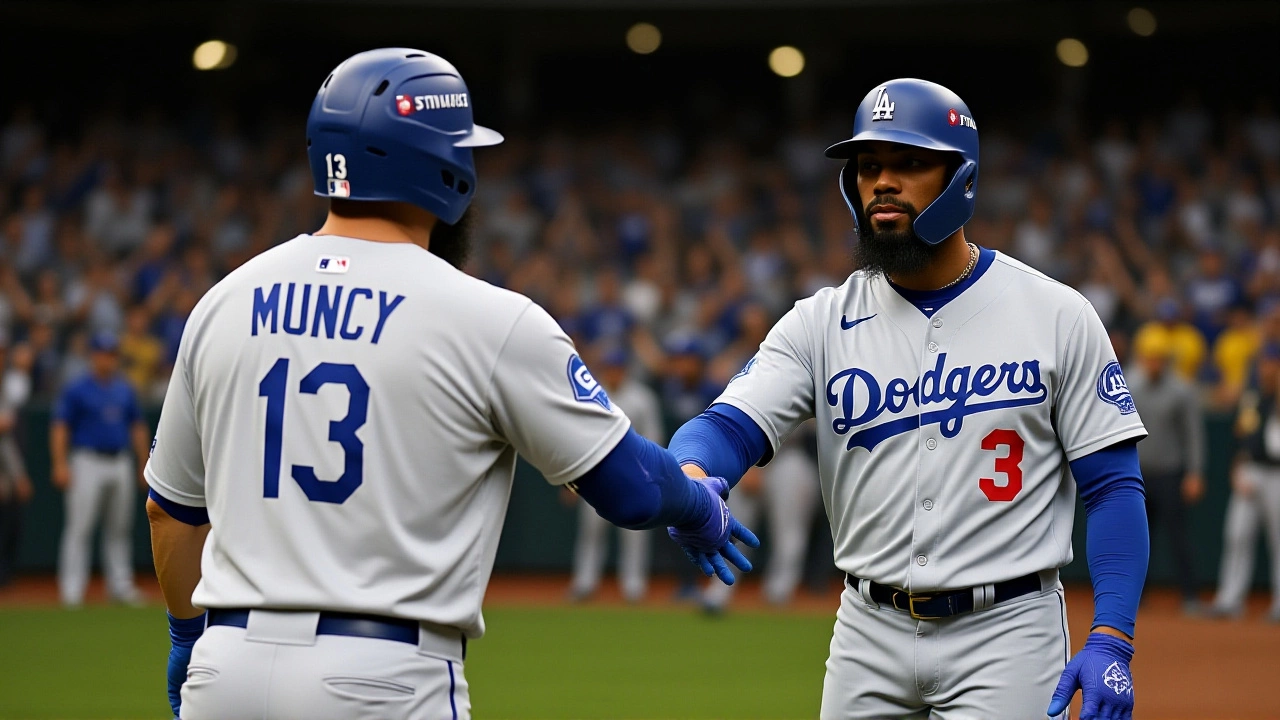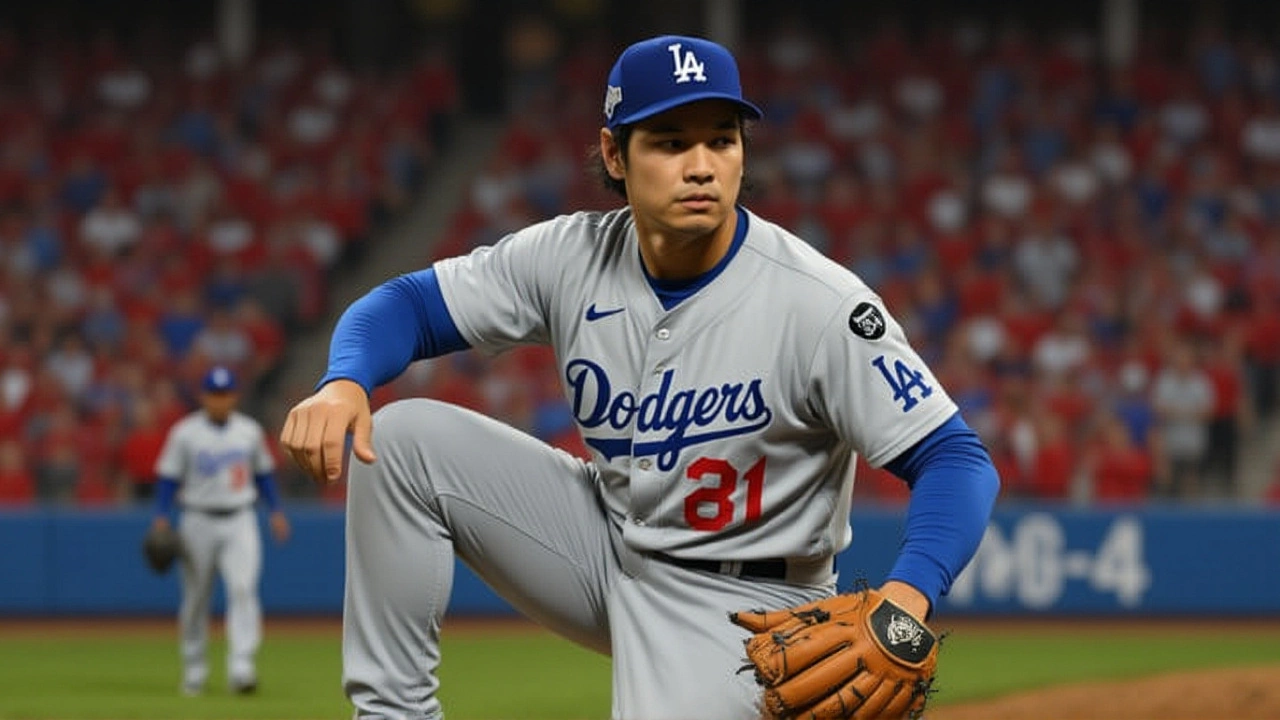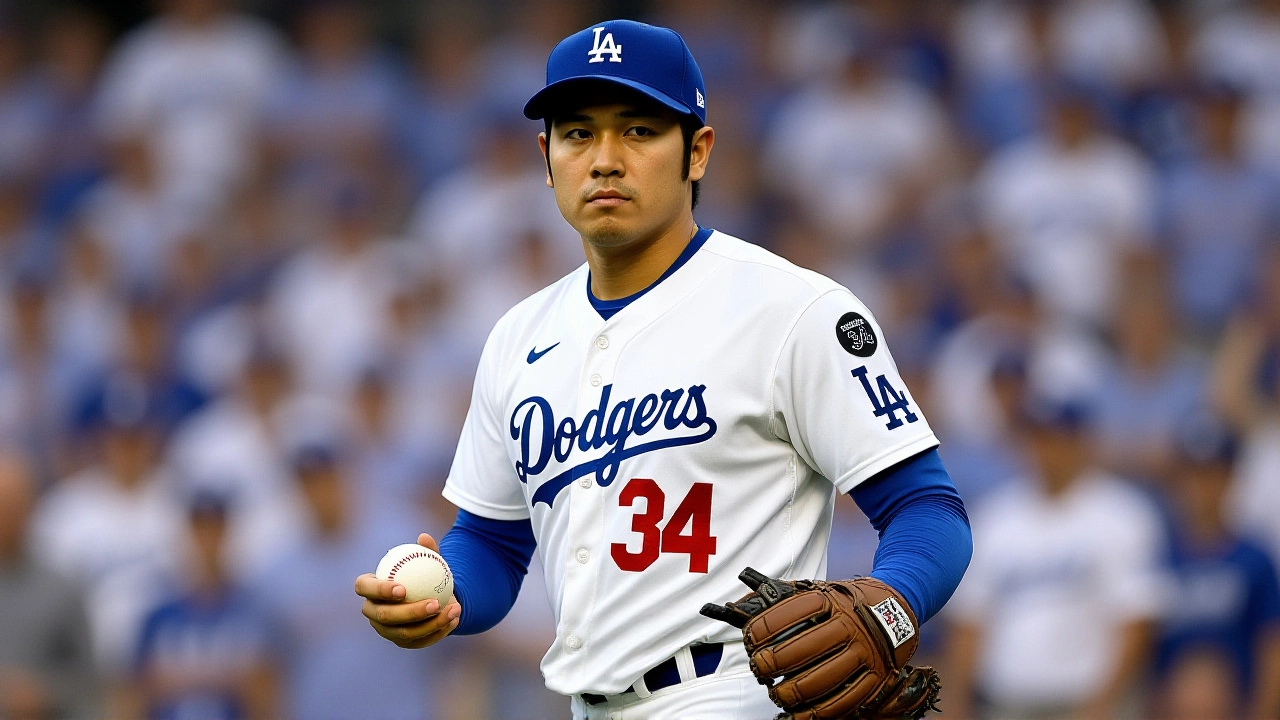
When Shohei Ohtani, pitcher and designated hitter of the Los Angeles Dodgers took the mound at Dodger Stadium on , the baseball world held its breath. The stage was set for Game 4 of the National League Championship SeriesDodger Stadium, and Ohtani was about to rewrite the postseason playbook.
Game 4 Overview: A Night to Remember
The Dodgers entered the game with a 3‑0 series lead, but nothing in baseball ever feels like a done‑deal until the final out is recorded. The Brewers, managed by Pat Murphy, rolled out a lineup featuring the likes of Christian Yelich, William Contreras and Brice Turang. Early on, Ohtani tossed a quick four‑seam fastball that earned a swinging strike‑out of Yelich, setting the tone for a night of dominance.
By the end of the first inning, Ohtani had already turned the game on its head. He leadoff with a 446‑foot blast off left‑hander Jose Quintana, making history as the first pitcher—regular‑season or postseason—to open a game with a home run. The crowd erupted, the scoreboard flashed 1‑0, and the narrative shifted instantly.
Six innings later, after fanning a total of ten Brewers batters, Ohtani slipped a second long ball into the left‑field seats. The third came in the bottom of the sixth, cementing a three‑home‑run night that no one saw coming. The Dodgers shut out Milwaukee 5‑1, sealing a four‑game sweep and the NL pennant.
Ohtani’s Historic Feats
What made the night extraordinary wasn’t just the raw numbers. Ohtani became the first pitcher in MLB history to combine a leadoff home run, three homers in a single postseason game, and double‑digit strikeouts. His performance tied him with five other players for the most leadoff homers in a single postseason (three), while also becoming the first to ever do it as a pitcher.
"I just wanted to stay aggressive," Ohtani said in the post‑game interview, his voice still shaking from the adrenaline. "When you’re at the plate, you treat it like any other at‑bat. The fact that I’m also on the mound doesn’t change that mindset."
Stat‑wise, Ohtani’s line read 6 IP, 0 R, 3 H, 2 BB, 10 K, 3 HR. The three home runs covered 1,342 feet of stadium airspace – a distance that would make even the most seasoned slugger grin. In addition, his strikeout spree included four consecutive batters in the third inning, a stretch that left the Brewers’ dugout speechless.
A quick glance at the MLB postseason archives shows that the only other player to ever hit three homers in a single playoff game was Reggie Jackson in 1977, and he wasn’t a pitcher. Ohtani’s blend of power and pitching prowess is a statistical anomaly that will likely sit in the record books for decades.

Supporting Cast and Managerial Moves
While Ohtani stole the headlines, the rest of the Dodgers crew played their parts. Manager Dave Roberts kept the bullpen fresh, pulling in left‑hander Roki Sasaki for the ninth inning. Sasaki, only 23, converted his third save of the postseason, a milestone that seemed impossible just months earlier when he was still a rookie in Japan.
On the Brewers side, Pat Murphy lamented the missed opportunities. "We gave Ohtani every chance we could, but his timing was perfect. It’s hard to find words for a night like this," he admitted.
The Dodgers’ offense also contributed with timely hits from Mookie Betts and Freddie Freeman, each driving in runs that padded the lead. The Brewers, despite the loss, finished the regular season 92‑70 and claimed the NL Central title – a solid achievement that will be a building block for next year.
What This Means for the Dodgers and the World Series
With the NL pennant secured, the Dodgers now set their sights on the World Series, slated to begin on . Their opponent? The American League champion, a team that still has to be decided at the time of writing, but the Dodgers’ confidence is sky‑high.
For the franchise, this marks the 24th NL pennant and the 12th World Series appearance since moving to Los Angeles in 1958. Financially, Forbes valued the organization at $4.0 billion in 2024, and a deep postseason run only cements its marketability.
Analysts on the TBS broadcast panel – former pitchers Pedro Martinez and former outfielder Curtis Granderson, along with former shortstop Jimmy Rollins – called Ohtani’s night "an all‑time postseason performance" and speculated it could be a turning point in his Hall of Fame candidacy.
Looking ahead, the Dodgers will likely stick with Ohtani in the dual role, a decision that could reshape roster construction across the league. If a pitcher can also be a three‑home‑run slugger, the conventional separation between ace and power bat might finally blur.

Historical Context: Pitchers Powering Postseason
Baseball history is littered with dominant pitching performances, but very few combine the mound’s mastery with the bat’s power. The only comparable feats include legends like Babe Ruth’s early career (though he was primarily an outfielder) and more recent two‑homer games by pitchers such as Madison Bumgarner in 2014. Ohtani’s triple‑home‑run display eclipses all of them because it happened in a must‑win game that clinched a league championship.
In the past decade, the rise of two‑way players has been gradual – most notably Ohtani himself, who debuted as a dual‑role star in 2018. His evolution mirrors the sport’s experimental phase, where teams are increasingly willing to test unconventional lineups. The 2025 NLCS could be remembered as the watershed moment that convinced skeptics the two‑way model works on the biggest stage.
Frequently Asked Questions
How does Ohtani’s performance affect the Dodgers’ chances in the World Series?
The three‑home‑run, ten‑strikeout game gives Los Angeles a massive psychological edge. It proves they can dominate both on the mound and at the plate, forcing any opponent to plan for a dual threat. If Ohtani stays healthy, his presence alone forces the opposing pitching staff to adjust, potentially opening up opportunities for the rest of the lineup.
What makes a leadoff home run by a pitcher historically significant?
Pitchers are traditionally valued for their ability to suppress runs, not generate them. Ohtani’s leadoff homer is the first ever by a pitcher in any MLB postseason game, shattering a 150‑year‑old convention and highlighting the growing viability of two‑way players at the highest level.
Who were the key contributors for the Brewers despite the loss?
Christian Yelich led the Brewers with two hits, and William Contreras added an RBI single in the third inning. Reliever Tyrone Taylor struck out four batters in a row, keeping the game close until Ohtani’s third homer expanded the gap.
What does this game mean for the future of two‑way players in MLB?
Ohtani’s performance could accelerate the adoption of two‑way contracts. Teams now have concrete evidence that a single player can dominate both facets of the game when given the right workload, prompting front offices to scout more talent from Japan’s NPB and college programs where two‑way play is more common.
When does the World Series begin, and who are the Dodgers likely to face?
The 2025 World Series is scheduled to tip‑off on . While the American League champion has yet to be decided, the Red Sox and the Rays are early favorites based on their regular‑season records and recent playoff form.


